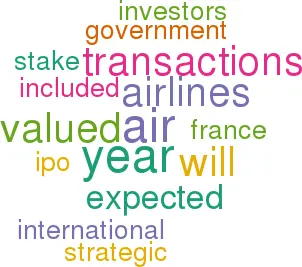Financing in 2000: Bankers should be happy
February 2000


With the 1999 rankings established for equity transactions (by volume and value), bonuses paid, egos massaged etc., investment bankers' thoughts inevitably turn to the prospects for M&A activity, privatisations, IPOs and secondary offerings over the next 12 months. The outlook is that there will be plenty of business in the aviation sector.
1999 saw some major equity transactions, most notably the IPO of UPS, which at $5.47bn was the largest IPO ever. Other IPOs included: 16% of Air France valued at $510m; 24% of Amadeus, the CRS, valued at $850m; and Indigo, the aircraft lessor, for $49m. Secondary offerings included: Alitalia, the combined domestic and international tranches raising $2.15bn: Austrian, the international tranche being valued at $178m; and Galileo, the travel services company, which raised $1.8bn.
M&A transactions included: Air Canada’s take–over of Canadian; American Airlines' purchase of Reno Air valued at $124m; BA’s acquisition of City Flyer; Delta’s buy–out of Comair; SIA’s 49% stake in Virgin Atlantic valued at $910m; and SAir Group’s minority investments in AOM, LOT and SAA.
The list of major airlines that do not have some form of private ownership has been whittled down to a handful, and some of these are expected to be IPO candidates this year — Asiana, Iberia, TAP, Royal Air Maroc, Royal Jordanian and Saudia, for example. Some 40% of Iberia is being sold to a consortium which includes BA and American, and the Spanish government will sell down a further 54% stake possibly in the first quarter of this year.
A decision is imminent on the sale of a 39% strategic stake in TAP to either Swissair, Air France or Lufthansa, and the Portuguese government is expected to further reduce its shareholding in 2001. An offering of Thai International shares in June is expected to attract strategic investors, which may either secure Thai’s place in Star or see its exit.
Other governments are still struggling to reach a decision on the future of their national airlines, trying to reconcile the paradox of inviting strategic investors but remaining unwilling to cede control. Most of the Asian national carriers fall into this category — see table on page 12. In Mexico the government has to decide whether Aeromexico and Mexicana, both owned by Cintra which is a quasi–statal body, should merge before they are sold off. Aerolineas Argentinas looks as if it needs another round of emergency finance.
The failure of Debonair and AB Airlines has made investors more selective in their opinion of the stock of European low–cost carriers. Nevertheless, EasyJet is expected to go for a fourth quarter listing on the London and NASDAQ stock–markets.
The trend set by Air France in consolidating its franchise partners looks set to continue at other European airlines. On the other hand, non–core activities will continue to be floated off — CRSs and e–commerce subsidiaries like Travelocity went last year. This year SIA, for example, will sell its ground handling and engineering subsidiaries.
M&A activity is likely in the postal service/ integrator sector. UPS has a large war chest for deals, with the TNT Post Group a possible target. The regulators could frustrate such cross–border transactions, though freight is less sensitive than passenger operations.
Further consolidation is possible among the lessors. Size is particularly important, and a number of players are queuing up to try and firmly establish themselves alongside market leaders ILFC and GECAS. Perhaps this year will be the one when someone finally acquires AWAS.
There is enough divergence of opinion in the financial community on the role of leasing in fleet planing, and on the state of the aircraft value cycle, for some large and surprising transactions to take place this year.